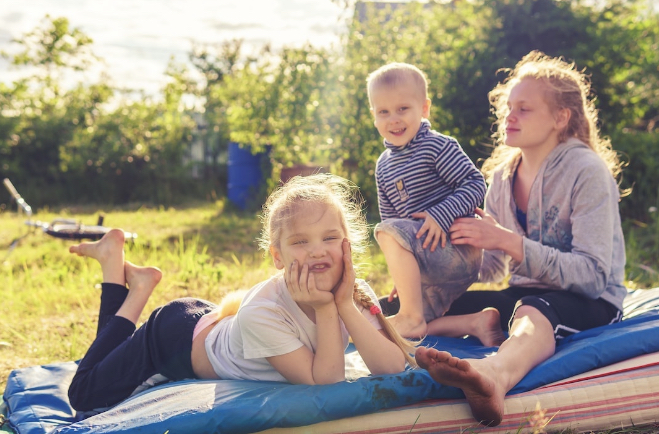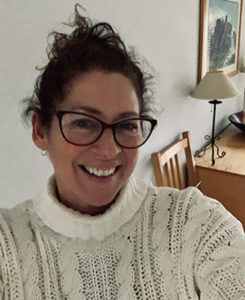
Your schoolhouse, a home of learning supports a child’s growth and creativity. There are many elements parents consider as they establish their family home. Creating a home of learning is preceded by the basic need of providing a structure. The physical qualities of shelter and security rank top on this preliminary list as they provide the foundation and framework for the family living and learning within its walls. With these tangible factors in place, parents may then comfortably transition into the profound art of making their house a home.
What specifically constitutes the meaning of home is as varied as the families that inhabit them. However, home to many is described as a feeling of peace, a sense of belonging, heartwarming familiarity, a safe place, a respite from the world outside. It has been our family’s experience the definition of home also includes a unique and flexible quality. We’ve discovered ‘home’ has the ability to be transported from house to house. With our family’s nomadic lifestyle spanning twenty+ years, we were able to experience ‘home’ no matter the hemisphere it was housed in. Familiar belongings such as furniture, photos, books, games and instruments helped provide consistency as they followed us around the world. However, the essential core elements we discovered in making a house a home were family members and our family culture. Two components that naturally transport together.
Family culture incorporates each family’s unique priorities, personalities, talents, genealogy, habits, traditions, history and routine. When family members are living and interacting with each other, wherever they may be, the family culture exists. Elements of family culture are established naturally, others are added by choice. One component my husband and I both wanted to include in our family culture was to establish a home of learning, a schoolhouse. We dreamed of working together to provide our children-to-be a comfortable, supportive environment in which to grow, learn, create and nurture curiosity. Subsequently, we named one of our houses along the way The Schoolhouse.
With our schoolhouse goal in place, my husband and I were intrigued to discover that we manifested this joint desire differently. He is a musician and provided enthusiastic support to any child with even a hint of musical interest. I love literature and learning and would fill shelves and evenings with books and stories. This natural, varietal influence is another beautiful aspect of family culture. Taking this endeavor seriously from the start, a home of learning began to naturally flow into many aspects of our family life influencing our family culture. It became a healthy undercurrent guiding us gently through the years and stages as a family. I would like to share a list of favorite family style opportunities in which we were able to establish our schoolhouse, a home of learning:
DINNER TABLE
Gathering to create and share good food, another element of our family culture, is a precious opportunity to not only make and serve generational family recipes but communicate stories of ancestors and extended family. Discovering a talent, interest or experience a child shares with a grandparent creates a healthy knowledge of their membership in a clan, a tribe, a family. Making family dinnertime a priority invites conversation gifting each person the opportunity to share something they learned that day or found interesting. Thus, not only learning takes place but teaching as well. At the table, everyone has an equal place. Monitoring conversation and keeping things light sets the tone for dinnertime as an interesting, safe, polite and inviting place of learning everyone wants to be.
PRESCHOOLERS
What an incredible opportunity parents have to teach their preschoolers at home. Parents are their child’s greatest teacher. The most significant lessons a child will ever learn are from watching and listening to their parents. A mother’s and father’s mentoring role can positively influence every aspect of their young child’s life. Supporting parents in maximizing this precious, foundational time by teaching at home is what prompted me to create the Golden Days at Home Preschool Curriculum. I hold dearly memories of the precious hours I prioritized to spend with my preschool-aged children before they headed off to kindergarten and beyond. I can attest the years of early childhood move ever so swiftly. Being mindfully aware of the importance of these years with 3 – 5 years old and acknowledging the opportunity does not return, encourages a parent’s desire to make the most of them. The Golden Days at Home Picture Book Lesson Plans provide a confident resource to spend deliberate time with your child teaching, creating, reading and enjoying shared experiences to influence a lifetime.
WORK
Teaching children that work is a part of life can only be described as a never ending challenge. But it is an important lesson or skill for children to learn early. Parents participating as role models is a start, well a constant, but it is effective especially over time. Routine, age-appropriate assigned chores are another teaching tool. Clearly communicated expectations of said chores is a must (just as the clearly communicated negative comments that will inevitably follow). To encourage a sense of responsibility, teach your children it takes a family to care for a family and being a member of the family means the family needs their help. The first routine chores we taught our young children were during our nightly, calming children’s hour routine. They were expected to tidy up personal belongings before bed placing dirty clothes in the hamper, playthings in their basket and books on the shelf. This work responsibility can begin early in your child’s life and is a gentle daily routine that teaches responsibility, tidiness and a satisfied feeling that all is well.

TRAVEL
Whether planning a family trip to a new country or an undiscovered park in your hometown, traveling educates. The unique and different sights, sounds, tastes and experiences enliven the senses as children take in all the new information. A change of routine fuels expectations of a unique adventure and builds excitement. Invite children to participate in planning the trip. This opportunity teaches that before traveling there is work to be done to help make it a good experience. Read books together related to your upcoming adventure. Learn what you can beforehand so opportunities to support individual family members’ interests are considered. Learn about the environment and the weather then discuss appropriate clothing and accessories to bring along. Involving family members in the planning and preparation of a trip broadens their entire experience and education long before you’ve even left the house.
PLAY
Families need time and space to play. Individuals within the family need the same. Life-long learning should be fun and natural and play is at the center of it all. For young children, play is their work. It’s an important part of cognitive development. Play is how children make sense of their world acting out new ideas or concepts they’ve noticed or experienced. Sometimes play is rowdy and interactive and sometimes play is calm and solitary. Just as parents don’t appreciate being interrupted from their work, the same is true for children. While watching our children immersed in their play we would often whisper to each other, “Don’t break the magic” giving them the time and space they needed. Children don’t always require tools to engage in play. They are incredibly gifted when it comes to imagination, especially while playing. Stones become cars, sticks turn into wands and simple toys inspire interactive role playing. Allowing children time and space to play opens a gap in their little minds they will creatively fill. In a home of learning, play is encouraged, supported and an essential component of family life.
READING
Reading is one of life’s greatest pleasures for young and old. The Schoolhouse, a home of learning generously offers books and other reading material. As one scans the home’s interior, chapter books, picture books, magazines, and board books are spotted on shelves, side tables, the kitchen counter, the family room floor. Reading is important, it is empowering. We learn from books, we are inspired by authors’ words and artists’ illustrations. The most natural way for parents to pass on the tradition of reading is to love reading themselves and to love books. Young children absorb more than we know. When a picture book illustration captures their attention, they are able to hold that image still for as long as they need to absorb its richness. With a book, they may then move on at the speed chosen by their own interest. This is a healthy relief from busy screen activities. Readers learn to discern right from wrong in stories within fairy tales, chapter books, picture books and novels. Regular trips to the library with young children, reading aloud at bedtime and gifting thoughtful books on birthdays teach children the value of books. Subsequently, they discover the lifelong magic of reading.
CREATIVITY
I home of learning must include the beautiful component of creativity. Every person is creative and has the capacity to be creative. Creativity comes in bounteous forms including cooking, drawing, inventing, speech and more. Creativity is unique to each family member. The definition of creativity is the use of imagination or original ideas. A home of learning provides the environment for igniting creativity in its many forms. A creative family home is not filled up with busy schedules and obligations but full to brimming with time and space to nurture personal creativity. A beautiful sight to see in a home of learning are unfinished projects around the house: drying playing dough shapes on a child’s table, a knitting project tucked on an armchair waiting for its crafter to return, a block tower beckoning its young builder to continue adding to its height, abandoned sketches resting on the dining room table. A practice we found to support creativity in our home was to establish areas where creative tools were easily accessible. Providing a low table in a child’s bedroom with crafting materials or building sets stored on a neighboring shelf encourage spontaneous creativity. Musical instruments available to experiment and fiddle with are enticing. So are simple recipes or an assortment of fresh food ingredients to experiment with in order to concoct spontaneous snacks or drinks. Acknowledging and encouraging the uniqueness of each family member’s creativity is an essential trait in the personality of a home of learning.
The size, location or structure of a schoolhouse is inconsequential. What is important is to incorporate a setting that supports the dreams and desires for a home of learning. In turn, this classification will guide family members as they choose activities or decide how to spend free time. Inviting early learning at home, reading, travel, conversation, work, play and creativity ignites curiosity, supports growth and adds harmony to your unique family culture. This flourishing influence will be present adding joy and fulfillment through the precious decades of your unique family’s life.
written by Janet Nicole Meyer for Golden Days at Home

